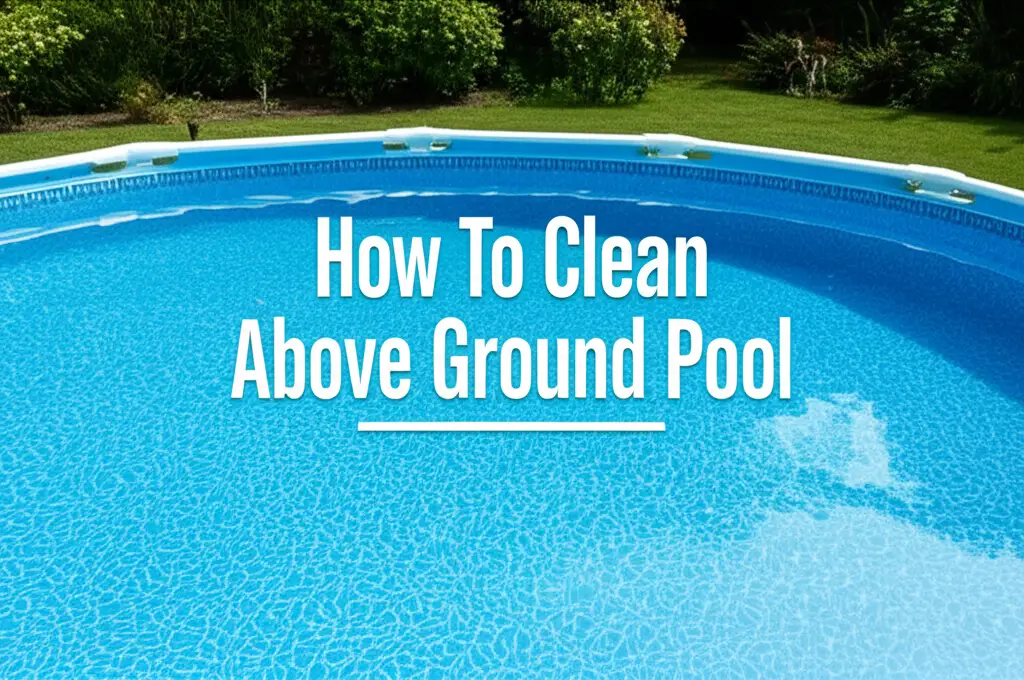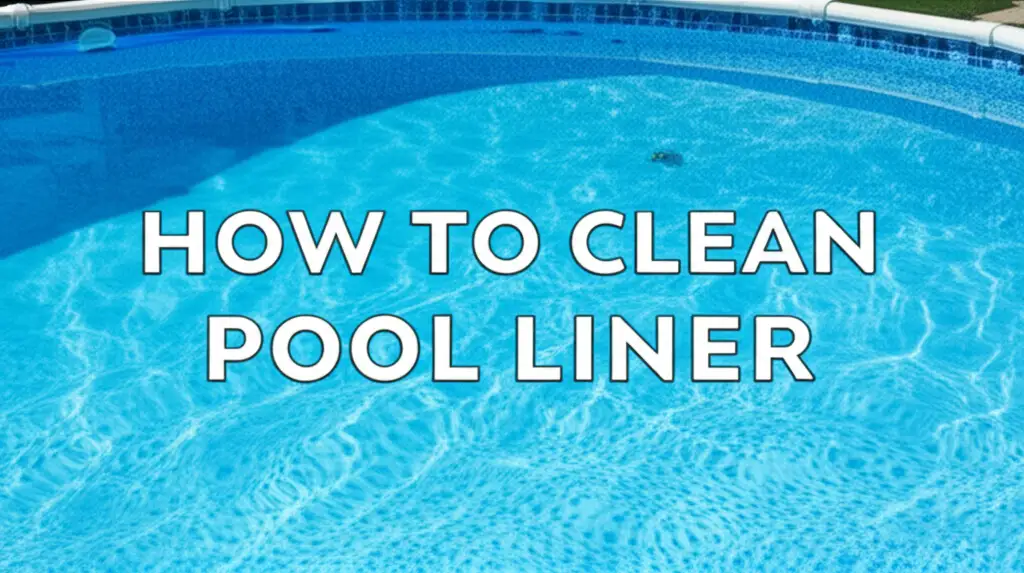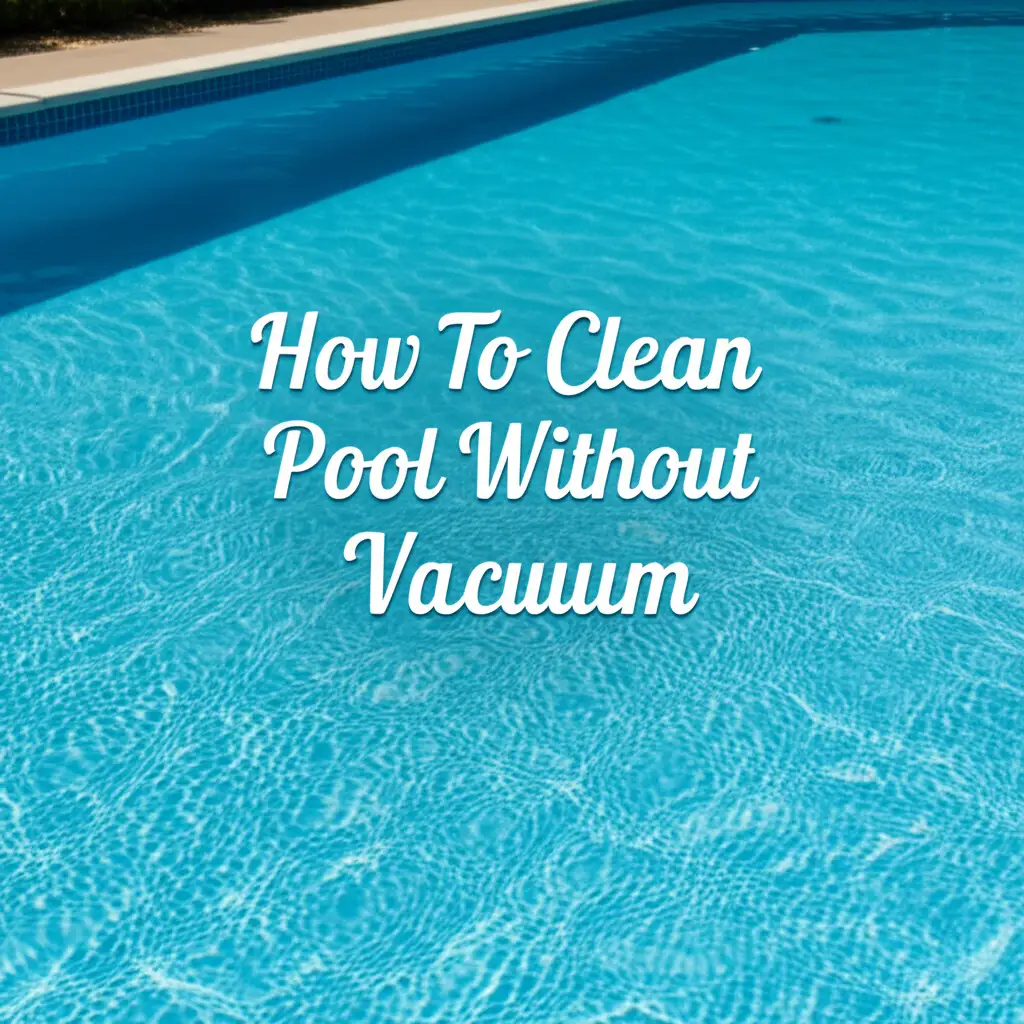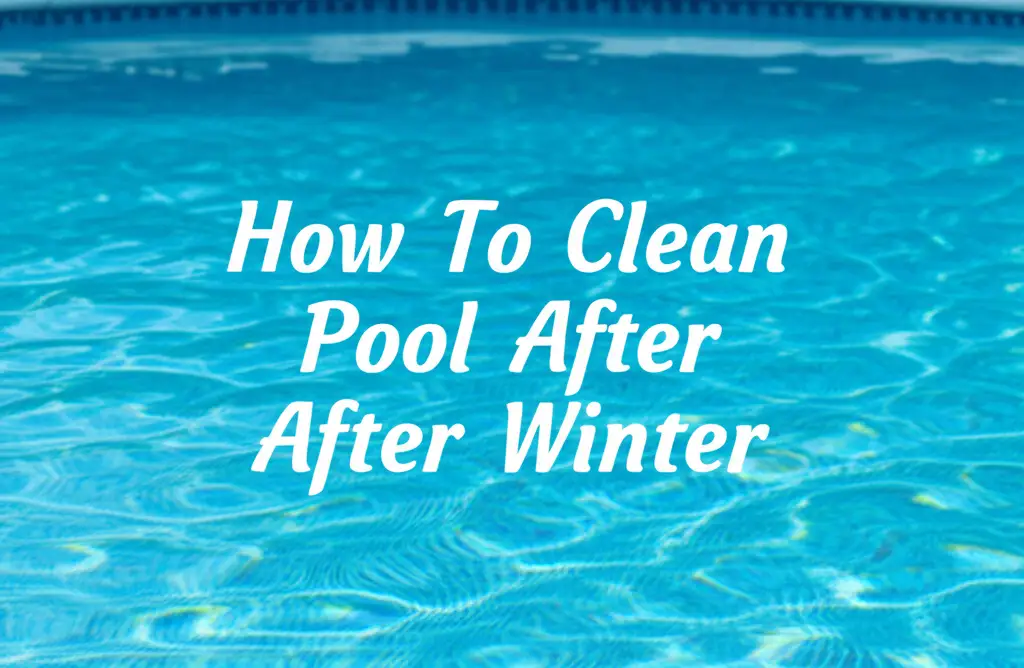· Pool Maintenance · 17 min read
How To Clean Above Ground Pool With Algae
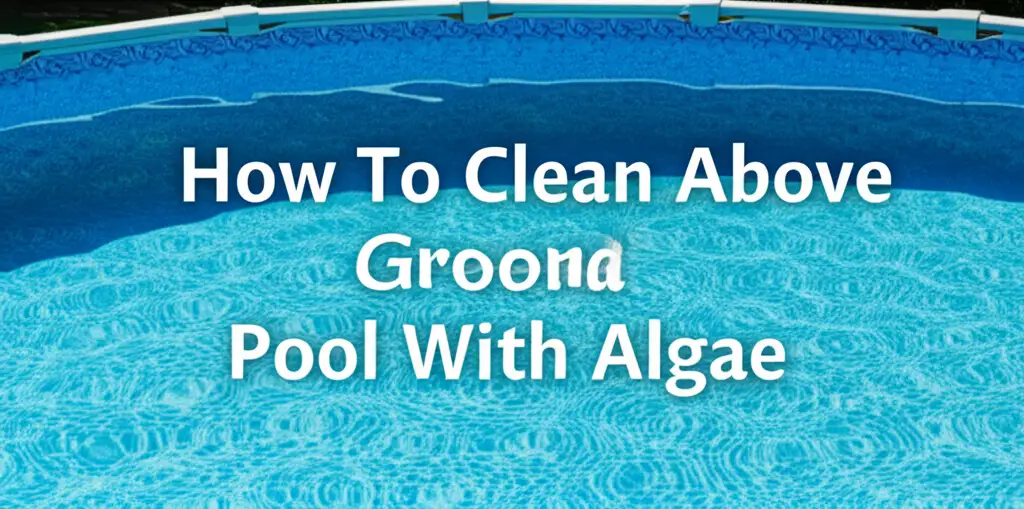
Restore Your Oasis: How to Clean Above Ground Pool with Algae
Imagine stepping outside on a warm day, ready for a refreshing dip in your above ground pool. Instead of sparkling blue water, you find a murky green swamp. Algae has taken over. This sight is frustrating for any pool owner. I have faced this problem many times. You are not alone in this struggle.
Cleaning an above ground pool with algae can seem like a huge task. It requires patience and the right steps. This guide provides a clear path to bring your pool back to life. We will cover identifying algae types, gathering necessary tools, and following a detailed cleaning process. You will also learn about maintaining your pool to prevent future algae growth. Let’s get your pool ready for summer fun again.
Takeaway
To effectively clean your above ground pool with algae:
- Identify the type of algae present.
- Gather necessary tools and chemicals like a brush, vacuum, test kit, shock, and algaecide.
- Brush all pool surfaces thoroughly.
- Shock the pool water according to product directions.
- Run the filter continuously and backwash as needed.
- Vacuum dead algae to waste.
- Balance pool chemistry.
- Maintain proper filtration and sanitation to prevent future blooms.
Clear Your Green Pool: The Fast Answer
To effectively clean an above ground pool with algae, first aggressively brush all affected surfaces. Then, shock the pool with a high dose of chlorine. Run the filter continuously for 24-48 hours. After shocking, vacuum dead algae to waste and rebalance your water chemistry.
Understanding Algae: Types and Causes in Your Above Ground Pool
Algae is a common issue for above ground pool owners. Knowing what kind of algae you have helps you fight it better. Different types require slightly different approaches. Algae thrive in warm, stagnant, or imbalanced water.
Green algae is the most common form. It makes your pool water look cloudy or murky green. Green algae often floats freely in the water. It can also cling to pool surfaces. This type is usually the easiest to treat. You will see it after heavy rain or if chlorine levels drop.
Black algae is more stubborn. It appears as small, dark spots, often on concrete or plaster. Black algae has strong roots that embed into surfaces. It resists brushing and chemicals more than green algae. You must scrub it aggressively to break its protective layers. I know how frustrating this type can be.
Yellow or mustard algae looks like pollen or sand. It often clings to pool walls and bottoms. This type is also resistant to normal chlorine levels. It spreads easily on cleaning equipment or swimsuits. Yellow algae can be tricky to remove completely. You might confuse it with dirt at first.
Pink algae is not true algae. It is a bacteria, but it looks like a slimy pink or red film. This slime often grows in shaded areas or on PVC pipes. Pink slime usually appears in areas with poor circulation. It feels greasy to the touch.
Algae growth signals an imbalance in your pool. Low chlorine levels are a primary cause. Poor water circulation also contributes to algae. If your filter does not run enough, water becomes stagnant. High pH levels reduce chlorine effectiveness. Nutrients like nitrates and phosphates also feed algae. Rainwater can introduce these nutrients. Regular maintenance prevents these conditions.
Essential Tools and Chemicals for Algae Removal
Before you begin the cleaning process, gather all necessary tools and chemicals. Having everything ready makes the job smoother. You will avoid interruptions during the treatment. This preparation step saves time and effort.
First, you need a good pool brush. Choose a brush designed for your pool liner material. Nylon brushes are safe for vinyl liners. Stiffer brushes work better for concrete or plaster. An extendable pole is also important. This pole lets you reach all areas of your pool.
A pool vacuum is crucial for removing dead algae. You can use a manual vacuum that connects to your filter system. Alternatively, a robotic pool cleaner can do the work for you. Ensure your vacuum hose and head are in good condition. You will also need a skimming net. This net helps remove large debris from the surface.
Water testing kits are vital. You need to know your pool’s current chemistry levels. Test strips offer a quick reading. A liquid test kit provides more accurate results. These kits measure chlorine, pH, alkalinity, and stabilizer levels. Knowing these numbers guides your chemical additions.
For chemicals, you will need a few key items. Pool shock is a high dose of chlorine. It kills algae and bacteria quickly. Choose calcium hypochlorite or dichlor shock. Follow safety instructions carefully. An algaecide specifically targets algae. It helps break down the algae and prevents regrowth. Select one compatible with your pool type.
Flocculant or clarifier might be useful. Flocculant makes small particles clump together. This makes them easier to vacuum or filter. Clarifiers help your filter catch tiny debris. For cleaning around the pool, consider solutions for various surfaces. For example, some people use vinegar and baking soda for general cleaning of accessories or deck furniture, though not for pool water itself.
Safety gear is also important. Wear gloves and eye protection when handling chemicals. Keep all chemicals out of reach of children and pets. Proper storage ensures their effectiveness and safety. Always read chemical labels thoroughly.
Step-by-Step Guide: Treating Your Algae-Infested Pool
Cleaning an algae-filled above ground pool requires a systematic approach. Follow these steps carefully for the best results. Patience is key during this process. Do not rush any stage.
Step 1: Prepare the Pool Begin by removing large debris from the pool. Use your skimming net to scoop out leaves, twigs, and other floating items. This prevents them from clogging your filter later. Turn off your pool pump before you begin brushing or vacuuming.
Step 2: Brush All Surfaces Thoroughly This is a critical step for how to clean above ground pool with algae. Take your pool brush and scrub every surface. Brush the walls, floor, steps, and any ladders. Pay special attention to areas with heavy algae growth. For black algae, use a stiff brush and really scrub hard. You want to break open the protective layer of the algae cells. Brushing helps expose the algae to chemicals.
Step 3: Test and Balance Water Chemistry Use your water test kit to check current levels. Focus on pH, alkalinity, and chlorine. Adjust pH to between 7.4 and 7.6 for optimal shocking. High pH reduces chlorine effectiveness. Adjust alkalinity to between 80 and 120 ppm. These adjustments ensure your shock works efficiently.
Step 4: Shock the Pool Apply a heavy dose of pool shock. The amount depends on your pool size and algae severity. For light algae, use 1-2 pounds per 10,000 gallons. For moderate to heavy algae, use 3-5 pounds per 10,000 gallons. For black algae, use even more. Always read the product label for specific dosing instructions. Distribute the shock evenly around the pool, typically at dusk or night. This prevents the sun from burning off the chlorine.
Step 5: Add Algaecide After shocking, wait about 12-24 hours. Then, add a quality algaecide according to label directions. Algaecide works with chlorine to kill algae. It also prevents future growth. Do not add algaecide at the exact same time as shock, as they can sometimes neutralize each other.
Step 6: Run the Filter Continuously Turn your pool pump on and let it run for 24-48 hours non-stop. This circulates the chemicals and filters out dead algae. The water will likely turn cloudy as the algae dies. This is a good sign.
Step 7: Backwash or Clean Your Filter Regularly As the filter works, it collects dead algae. Your filter will get clogged. Check your pressure gauge. Backwash your sand filter or rinse your cartridge filter when the pressure rises. For sand filters, knowing how to clean sand filter for above ground pool effectively is key. Dirty filters cannot clean water efficiently. Repeat this process as needed until water clears.
Step 8: Vacuum Dead Algae to Waste Once the water starts to clear and dead algae settles, vacuum it out. Set your filter valve to “waste” or “drain.” This bypasses the filter and sends the dirty water out of the pool. Vacuum slowly. Be careful not to stir up the settled algae. You will lose water during this process. Have a garden hose ready to add fresh water to keep the water level up. This step helps to clear the pool significantly. Many common pool problems involve debris at the bottom. Cleaning muck from the bottom of your pool is similar to managing how to clean muck from bottom of pond in terms of strategy: slow, careful removal is critical to avoid stirring up more issues.
Step 9: Re-test and Rebalance After vacuuming and adding fresh water, re-test all your water chemistry levels. Adjust pH, alkalinity, and chlorine as needed. Add stabilizer (cyanuric acid) if levels are low. Stabilizer protects chlorine from UV rays. Maintain proper levels to keep your pool clean.
Repeat brushing, vacuuming, and filtering as necessary. It might take a few days for your pool to fully clear. Stay persistent.
Deep Cleaning Your Pool Filter System
Your pool filter is the heart of your cleaning system. When you clean an above ground pool with algae, the filter works overtime. A clean filter ensures efficient algae removal. A dirty filter cannot properly filter dead algae or circulate chemicals.
For sand filters, regular backwashing is essential. Backwashing reverses water flow. It flushes trapped debris out of the filter. You should backwash when your pressure gauge reads 8-10 psi above its normal clean operating pressure. Backwash until the water runs clear in the sight glass. This typically takes a few minutes. I usually backwash until the water clears. Remember, backwashing wastes water.
Sometimes, sand filters need a deeper clean. Over time, sand can get channels or become hard. This reduces its effectiveness. You can use a sand filter cleaner to break down oils and debris. Follow the product instructions for these cleaners. Periodically, you might need to replace your sand. This happens every 3-5 years, depending on use. For detailed guidance on this, learning how to clean sand filter for above ground pool properly is vital for long-term pool health.
Cartridge filters require physical cleaning. You must remove the cartridge from the filter housing. Use a garden hose with high pressure to spray off debris between the pleats. Work from top to bottom. For stubborn grime, soak the cartridge in a filter cleaning solution overnight. These solutions break down oils and scale. Rinse the cartridge thoroughly before reinserting it. Cartridges typically last 1-2 years. Regular cleaning extends their life.
DE (Diatomaceous Earth) filters also need backwashing. They also require “recharging” with new DE powder after backwashing. Periodically, DE filters need a full breakdown and cleaning. This is called a “DE filter grid clean.” Remove the grids and spray them down. Check for tears or damage to the grids. Replenish DE powder according to your filter size.
Always check your filter system’s O-rings and gaskets. Ensure they are clean and lubricated. This prevents leaks and maintains proper pressure. A well-maintained filter system is key to keeping your pool water clean and clear. Do not overlook this important step in pool care.
Balancing Pool Chemistry After Algae Treatment
After successfully cleaning your above ground pool with algae, rebalancing the water chemistry is crucial. This step prevents future algae blooms and protects your pool equipment. It also ensures the water is safe and comfortable for swimming. You want your pool water to be perfectly balanced.
Start by re-testing all critical water parameters. Use a reliable test kit. Measure chlorine, pH, total alkalinity, and cyanuric acid (stabilizer). These are the main levels to focus on. Each plays a role in water quality.
Chlorine levels should be maintained between 1-3 parts per million (ppm). If your post-algae treatment chlorine is still high from shocking, wait for it to drop naturally. Sunlight and use will help. If it is too low, add more chlorine. Use your regular sanitizing chlorine tabs or granular chlorine.
pH levels are important for swimmer comfort and chlorine effectiveness. The ideal range is 7.4 to 7.6. If your pH is low, add a pH Increaser (soda ash). If it is high, add a pH Decreaser (muriatic acid or dry acid). Follow product instructions carefully for dosing. Improper pH can irritate skin and eyes.
Total alkalinity acts as a buffer for pH. It helps keep pH stable. The ideal range is 80-120 ppm. If alkalinity is low, add alkalinity increaser (sodium bicarbonate). If it is high, you will need to add acid to bring it down slowly. This balance prevents drastic pH swings.
Cyanuric acid (CYA) stabilizes chlorine from UV degradation. The ideal range for above ground pools is 30-50 ppm. If CYA is too low, your chlorine will evaporate quickly. Add stabilizer as needed. If it is too high, you might need to drain some water and add fresh water. High CYA can make chlorine less effective.
Also, consider calcium hardness. The ideal range is 180-220 ppm. Low calcium can lead to corrosion. High calcium can cause scaling. Adjust using calcium hardness increaser. This is less critical for vinyl-lined above ground pools than plaster pools.
Finally, consider adding a weekly maintenance dose of algaecide. This acts as a preventative measure. It helps stop small algae spores from blooming. Consistent water chemistry checks are vital. I always tell people to test their water at least 2-3 times a week. This regular attention keeps your pool sparkling.
Preventing Future Algae Blooms in Your Above Ground Pool
Cleaning an above ground pool with algae is a big job. The best approach is to prevent algae from growing in the first place. Proactive maintenance saves you time, money, and frustration. I believe prevention is easier than cure.
1. Maintain Proper Chlorine Levels: Chlorine is your primary defense against algae. Test your chlorine levels daily or every other day. Keep free chlorine between 1-3 ppm. Shock your pool weekly or bi-weekly. This kills any lingering spores. After heavy use or rain, shock your pool.
2. Ensure Good Water Circulation: Your pool pump and filter must run long enough. Aim for at least 8-12 hours per day. This circulates all the water through the filter. It also distributes chemicals evenly. Poor circulation creates stagnant areas where algae thrives. Consider where your skimmer and return jets direct water flow.
3. Regularly Brush and Vacuum: Even if your pool looks clean, brush the walls and floor regularly. This dislodges any algae spores before they can attach. Vacuum your pool at least once a week. Removing debris reduces nutrient sources for algae. If you have a deck around your pool, keeping it clean can also prevent debris and contaminants from entering the pool. Many people find general cleaning tips useful, such as those for how to clean a dirty deck without removing stain, to keep the entire pool area pristine.
4. Keep Water Chemistry Balanced: As discussed, pH, alkalinity, and stabilizer levels are crucial. Test these at least once a week. Adjust them as needed. Balanced water allows chlorine to work at its best. An unbalanced pool is an open invitation for algae.
5. Prevent Nutrient Introduction: Algae feed on phosphates and nitrates. Limit these in your pool. Rinse swimsuits and gear before entering the pool. Keep fertilizers away from the pool area. Heavy rain can also introduce nutrients. Use a phosphate remover if you have a persistent problem.
6. Use a Pool Cover: When not in use, cover your pool. A cover blocks sunlight, which algae needs to grow. It also keeps out leaves, dirt, and other debris that introduce nutrients. Ensure your cover is clean.
7. Clean Pool Toys and Equipment: Algae spores can cling to pool toys, floats, and cleaning equipment. Rinse these items before and after use. Store them in a clean, dry place. This prevents transferring spores back into a clean pool.
Consistent attention to these practices will keep your above ground pool sparkling clean. You can enjoy your pool all season long without the headache of algae.
Common Algae Cleaning Mistakes to Avoid
When you clean an above ground pool with algae, some common errors can make the process longer or less effective. Avoiding these mistakes saves you time and resources. I learned many of these the hard way.
1. Not Brushing Enough: Many people underestimate the importance of brushing. Algae, especially black or yellow, has protective layers. Brushing breaks these layers. It exposes the algae to chemicals. Skipping this step means your shock treatment might not penetrate the algae effectively. Brush every inch of your pool.
2. Not Running the Filter Long Enough: Your filter system is essential for removing dead algae. If you turn off your pump too soon, the dead algae will remain in the water. The water will stay cloudy. Run your filter continuously for at least 24-48 hours after shocking. Even when the pool looks clear, run it for a few extra hours.
3. Not Backwashing/Cleaning the Filter: A clogged filter cannot do its job. As algae dies, it clogs the filter. You must backwash sand filters or clean cartridge filters often. Check your filter pressure gauge. A rising pressure indicates a dirty filter. Neglecting this leads to poor water circulation and clarity.
4. Adding Chemicals Incorrectly: Always read product labels for dosing instructions. Adding too little shock will not kill all the algae. Adding too much can waste chemicals and upset your water balance more. Add chemicals at dusk to prevent sun degradation. Distribute chemicals evenly. Some chemicals, like shock and algaecide, should not be added simultaneously.
5. Not Vacuuming to Waste: When dead algae settles, it forms a fine powder on the bottom. If you vacuum this back through your filter, it can quickly clog it. It might also pass through some filters, returning to the pool. Vacuuming to “waste” bypasses the filter. This sends the dirty water directly out of the pool. Yes, you lose water, but it’s the most effective way to remove large amounts of dead algae.
6. Neglecting Water Chemistry Balance: Algae thrives in unbalanced water. If your pH is too high or low, chlorine becomes ineffective. Ignoring total alkalinity or stabilizer levels also sets the stage for algae. Always re-test and rebalance your water after an algae treatment. This maintains chlorine effectiveness.
7. Giving Up Too Soon: Cleaning a green pool takes time and persistence. It might not clear in one day. The water might turn cloudy or even different colors before it clears. Do not get discouraged. Keep brushing, filtering, and testing. Patience will lead to a clear pool.
Avoiding these common pitfalls will make your algae removal process more efficient. You will achieve a clean, healthy pool faster.
FAQ Section
Q1: How long does it take to clean an above ground pool with algae? A1: Cleaning an above ground pool with algae can take 3-7 days. The time depends on the severity of the algae bloom. Light green algae may clear in 2-3 days. Heavy black algae might require a full week or more. Consistent brushing, shocking, and filtering speed up the process.
Q2: Can I swim in a pool with algae? A2: No, you should not swim in a pool with algae. Algae itself is usually not harmful, but it indicates an unhealthy pool. The water likely contains high levels of bacteria or other pathogens. These contaminants can cause skin irritation, ear infections, or stomach issues. Wait until the pool is clear and chemicals are balanced.
Q3: What kills pool algae fast? A3: A high dose of pool shock (chlorine) effectively kills pool algae fast. Combined with aggressive brushing, it breaks down the algae cells quickly. Following up with an algaecide helps ensure all spores are destroyed. Proper filtration then removes the dead algae efficiently.
Q4: Why does my above ground pool keep getting algae? A4: Your above ground pool keeps getting algae due to low chlorine levels, poor water circulation, or unbalanced water chemistry. Insufficient filtering time, high nutrient levels (from leaves or rain), or warm temperatures also contribute. Consistent testing and maintenance are key to prevention.
Q5: Should I drain my pool to clean algae? A5: Draining your pool is generally not necessary for algae. Most algae can be treated with chemicals and filtration. Draining can be costly and stressful on your pool liner. Only drain as a last resort for extreme, persistent black algae, or if you face major water chemistry issues.
Q6: What is the difference between pool clarifier and flocculant for algae? A6: Pool clarifier causes tiny particles to stick together into larger ones. These larger particles are then caught by the filter. Flocculant makes particles clump together and sink to
- pool algae removal
- above ground pool cleaning
- green pool solution
- pool maintenance guide
- algaecide application

